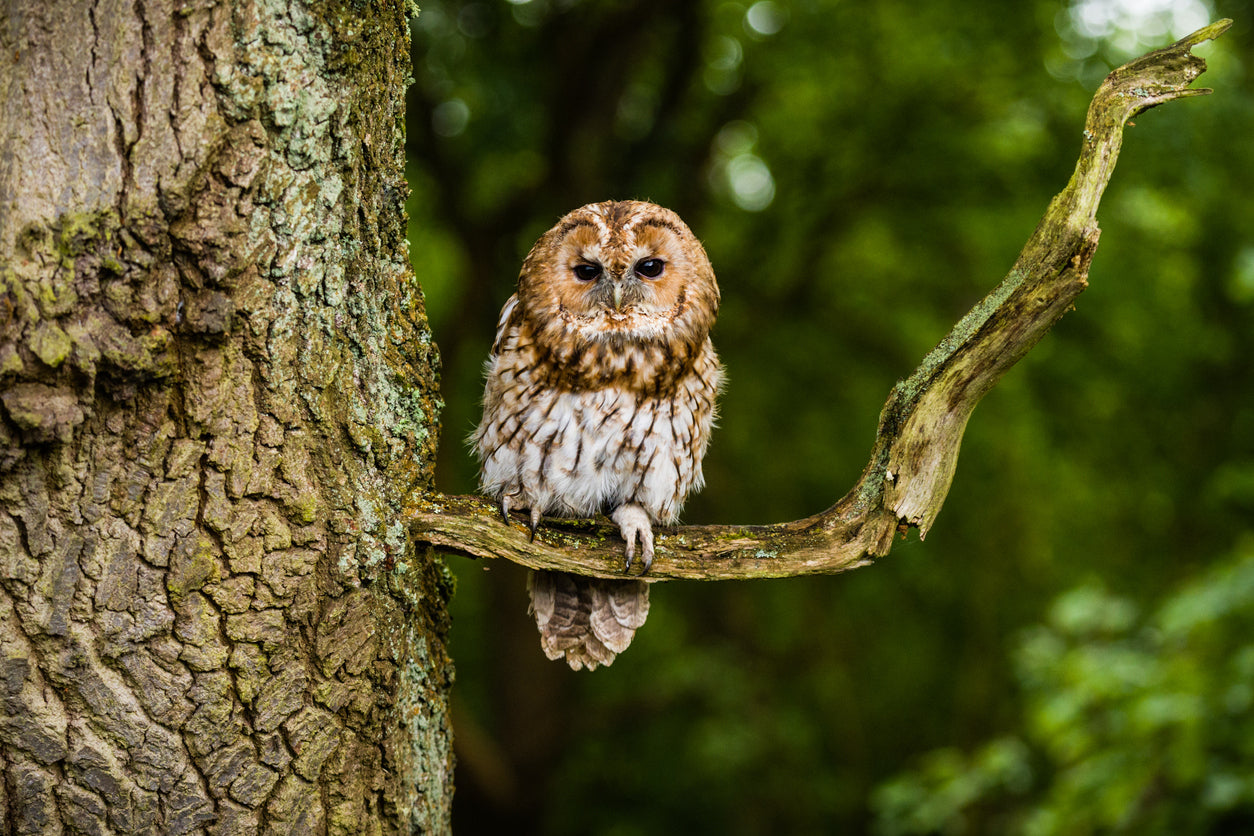
Tawny Owl
Although their conservation concern status is currently green, populations haven’t been as widely studied as other species. There is some concern that populations are steadily declining, but the RSPB estimates there are currently around 50,000 breeding pairs in the UK.
Nesting and Breeding Habits
Holes in buildings or trees are Tawny Owls’ favoured nesting spots, but they will also occasionally nest in specialised nesting boxes or a squirrel’s drey. The Tawny Owl breeding season begins in early March, and females will lay between one and seven eggs.
You are much more likely to hear a Tawny Owl calling high up in the trees than you are to see one, making any rare glimpses you do happen to catch even more special.
Diet
They feed predominantly at both dawn and dusk, and small mammals such as mice, voles and shrews make up most of their diet. Tawny Owls will also prey on amphibians, rabbits and small birds.
Hunting Behaviour
Tawny Owls are quick fliers, and their strong and exceptionally efficient wings make them excellent hunters. They will observe their prey from a perch before swooping down at the ideal moment.
General Facts
Latin name: Strix aluco
Length: 37 cm - 39 cm (15”)
Wing span: 94 cm - 105 cm (38” - 40”)
Weight: 330g - 580g (1lb)
Seen: Year round
Conservation concern status: Green
